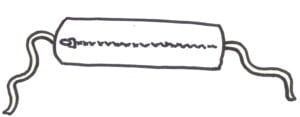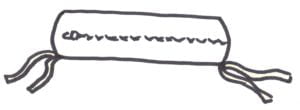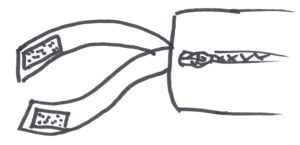Tied Down: The Ultimate Guide to Cushion Attachments
Cushions are a great way to add comfort and style to your furniture, but without proper attachment, they can be blown away by the wind. That’s where ties come in! In this guide, we’ll cover everything you need to know about cushion ties, from the types of ties available to where to attach them on your cushions. You’ll soon know all the ins and outs of cushion attachments!
Which Cushions Need Ties
You may be wondering if you should bother with ties. The best way to determine if you need ties is to look at your furniture.
Ties are best for furniture that has gaps in the side or at the back. This gives a place for the ties to attach. Otherwise, if the furniture has no openings around the cushion there is no place for ties to attach.
Ties are excellent for dining chairs or other seats people often use frequently. They prevent the cushion from shifting each time someone moves, allowing for a more comfortable and secure experience. Furthermore, ties are a great idea for furniture without a back rest, such as bar stools and picnic benches.
Types of Cushion Ties
Ties are straps of material connected to the cushion to hold it into place. They are the same material as the cushion. At Northern Patio, we work with Sunbrella, a durable versatile fabric.
Cushion attachments come in a variety of styles and materials. For example, a pair of ties on the same corner can wrap around the leg of a chair. Additionally, ties can also be single straps on opposite sides of the cushion that attach around the back frame. Here are some of the most popular types:
- Straps: These are long and thin straps of fabric. They connect around the leg or the back of the chair to keep the cushion in place.
- Hook and Loop: Hook and Loop ties are easy to attach and detach. They are often thicker straps.
Placement
The placement of your ties will depend on the size and shape of your cushions and the type of furniture you have.
The most common places for ties are the rear corners of the cushion. They can either be in the centre of the thickness or in the bottom seam. You can also attach ties to the sides of the cushion or along the back of the cushion. It is important to tell the cushion manufacturer where you would like your ties placed.
Examples
Benches – If you have a bench that does not have a backrest, like a picnic table, you might want ties. These ties can be placed on the long sides of the cushion, a few inches in from the edge. They could be single straps to wrap around the bench, or pairs to tie around the legs.
Dining Seat – Dining seats are the most common cushion to get ties. They are usually placed at the rear of the cushion, in the centre of the thickness. This has the added benefit of making the cushion double-sided.
Dining Back – Dining chairs often have dimensions that make tall, skinny backs. As a result, these backs have trouble staying up without ties. A pair of ties in each top corner can help secure the cushion from falling over when not in use. These are generally placed in the rear/bottom seam, and not the centre.
Chaise Lounge – Chaise frames often have attachment points. Typically, ties on a chaise are pairs in either side of the join and single straps to tie together along the back. There are placed in the rear seam, not the centre. of the thickness.
In conclusion, ties are an essential accessory for any outdoor furniture. They provide security and prevent the cushions from moving or being blown away. With the right type, placement, and attachment, your cushions will stay in place and provide the comfort and style you desire.
If you have any questions, please contact our sales team, who will be happy to help.






